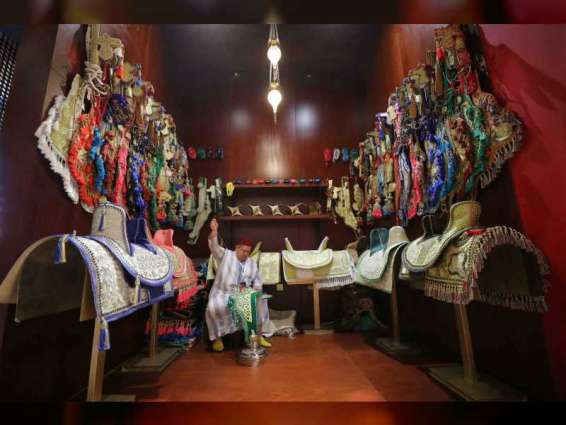ABU DHABI, (Pakistan Point News - 22nd Apr, 2019) The fourth edition of ‘Morocco in Abu Dhabi’, running until 30th April, is gaining more success day after day in sustaining ties between the UAE and Morocco, and introducing UAE communities to the inherent Moroccan culture and heritage. One of these cornerstones is traditional workmanship, as a component of the creative Moroccan personality throughout the generations.
Traditional industry enthusiasts at ’Morocco in Abu Dhabi’ will have the chance to explore and discover the skilled genius and gifted talents of Moroccan craftsmanship translating ancient heritage and Arabic Islamic legacy, such as copper and silver engravings, saddle making, jewelry, embroidery, raffia shoes, Cherbil, Tazwaqt, engravings on wood sculpture, pottery, as well as the famous Amlou and Henna tattoo.
The Moroccan craftsmen’s skill is brilliantly reflected in the traditional exhibits on show, specifically in the precision of their structures and the expertise of their makers who have inherited some of these crafts from their ancestors. They handed down these traditional handicrafts to the new generations, enriching their art through design diversity and creativity to delight the senses.
The craft of pottery has a special place in the Moroccan heritage scene. It relies on clay as a Primary raw material. After cleaning the clay from stones and limestone, it is placed in water tanks for a long time, then exposed to the sun to dry. Then it is kneaded and thrown on to a special wheel that the craftsman operates with his feet, while the clay is moistened by hand using water to make it maleable. It is placed again under the sun to dry and then put in ovens at a high temperature between 900 and 1,200 degrees to fire the product.
Zellige tiles are traditionally handcrafted with non-refined natural clay. Moroccan Zellige, also known as Zilij or Zelij, is characterised by unique aesthetic variations of tone, shine, flatness, transparency and depth of the glaze as well as a surface texture with irregularities. Zellige tiles are suitable for both wall and floor installations. This form of Islamic art is one of the main characteristics of Moroccan architecture.
This is one of the most important handicrafts that has been handed down, preserving its essence, its continuity and its heritage generation after generation. Urban jewelry is usually made of finely chiseled gold, most of them with floral designs, lightly carved and enhanced with precious stones. The rural, or Amazigh jewelry, especially in the south of the country, where they are often crafted from silver, are sumptuous and of a great nobility. They are characterised by a purity of lines, and are differentiated by geometric designs and sometimes with floral motifs.
Moroccan embroidery is an inherited art which has been associated with Moroccan women’s lives since ancient times, practiced by women and passed down from mother to daughter. Moroccan embroidery varies across Moroccan cities.
Engraving on copper and silver products is also significantly important for Moroccans and is used in their home decor, bridal accessories, at receptions and even in the kitchen, often being a popular gift. Copper and silver engraving and carvings are mostly found in markets and neighborhoods in the old cities of Fes, Meknes, Rabat, Marrakech and Taza, the largest copper and silver product export hubs of Morocco.
Saddle making has been a major craft in Morocco since medieval times in the city of Fes. This craft requires other supplementary crafts, such as carpentry, blacksmithing, tanning, stitching and jeweled embellishments.




